
As a result of the ever-evolving world of the web, content marketing has shifted away from keyword-stuffed blocks and clickbait schemes toward a people-focused, value-driven approach. Consequently, today’s audience—and Google—demand more than just content. They expect true value, authentic voices, and trustworthy information.
Welcome to the world of E-E-A-T: Experience, Expertise, Authoritativeness, and Trustworthiness. It’s Google’s attempt at keeping online content both relevant and created by actual human beings with real expertise and care.
So how do you create a content marketing plan that prioritizes humans and succeeds in the eyes of Google?
Let’s get started.
What Does “Human-First” Content Mean? Human-First Content: Writing for People, Not Just Search Engines
Effectively, human-first content prioritizes humans over algorithms. That is, writing for real readers—not just to please search engines. Therefore, this approach prioritizes clarity, relevance, and a welcoming tone that makes the audience care.
Moreover, instead of sounding robotic or overly promotional, human-first content feels genuine, honest, and emotionally engaging. It creates a stronger connection by being transparent and sincere, showing that the writer truly understands and cares about the reader’s needs.
Additionally, this kind of content is practical and useful, offering real value and actionable tips that readers can apply to their own life or business. Not only does it inform, but it also empowers the audience to take meaningful action.
As you begin to create content with a human-first mindset, your focus shifts. Rather than constantly wondering, “How do I rank on Google?”, you start asking, “How can I help my readers?” This shift in perspective naturally leads to content that resonates deeply, builds trust, and fosters long-term relationships with your audience.
What is E-E-A-T and Why Should You Care?
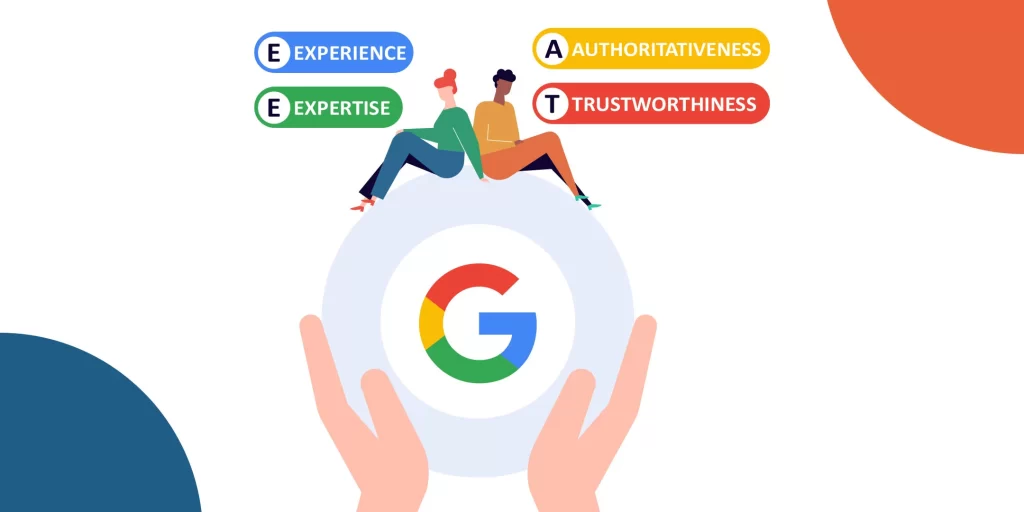
Google uses the E-E-A-T principle to determine content quality, especially where dealing with matters that would directly influence people’s health, finances, well-being, or happiness. Such content is often referred to as “Your Money or Your Life” (YMYL) and subjected to additional examination when it comes to the content creator’s liability. This is where E-E-A-T comes in to help both Google and creators build trust with users.
To begin with, what does E-E-A-T really stand for?
Experience – Have you actually lived and experienced or gone through the subject you are covering? Real experience forms a very strong connection with your readers.
Expertise – Do you have in-depth knowledge or expertise about your subject matter? In essence, it’s all about proving you’re not just well-read but actually competent or qualified to discuss the topic.”
Authoritativeness – Do you hold established, reputable stature in your space? Authority is what creates credibility and signals both Google and your audience that they can trust you.
Trustworthiness – Do your readers have the ability to trust what you’re presenting to them? Trust is established through providing transparent, honest content your readers can have faith in.
This system doesn’t just help Google sort out the white noise. It’s a necessary tool for building long-term relationships with your audience, making your content stand out in a crowded online space and your brand become the trust it’s worthy of.
Human-First Content Marketing with E-E-A-T: A Step-by-Step Guide
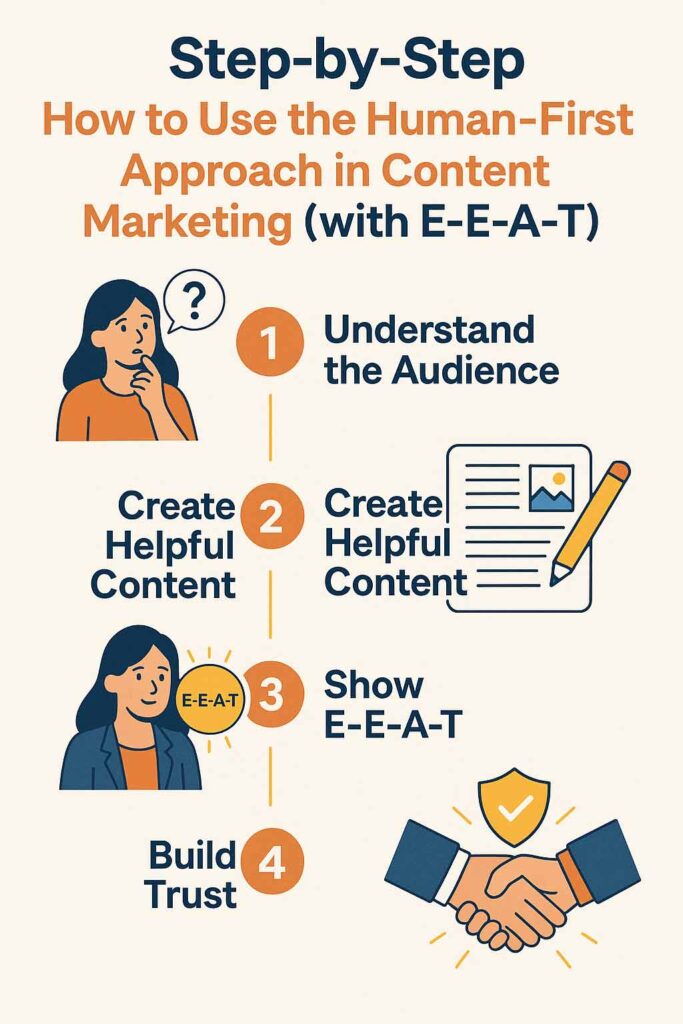
Start With Real Human Experience (E)
In content marketing, first-hand experience truly matters. Google values content created by people who have actually done what they’re discussing. Why is that? As first-hand experience adds depth, authenticity, and trustworthiness. It brings unique insights, practical advice, and real-life stories that readers can relate to. Whether you’re sharing travel tips or health advice, people want to hear from someone who’s been there—not just repeating research. By sharing your real experiences, you boost your credibility and create a personal connection with your audience.
Tips:
- Share personal stories, case studies, or customer testimonials.
- Include behind-the-scenes looks into your process.
- Use “I” or “we” if the writer has real involvement.
For example: Instead of saying “Running a small business is tough,” say “When I launched my clothing store in 2019, I faced challenges with inventory and marketing.”
Demonstrate Expertise (E)
No matter if you’re an artist, entrepreneur, or brand, showing that you know what you’re doing is the most effective way to be trusted. In 2025, having knowledge of something isn’t sufficient—you need to have real, first-hand knowledge based on experience or professional practice. People require actionable advice, not shallow knowledge. Show your expertise by providing real outcomes, case studies, qualifications, or deep insights that reveal you actually understand their needs. When you demonstrate that you “know your stuff,” people are more likely to trust, follow, and share your content.
Tips:
- State your credentials or professional experience.
- Use quotes from authorities in the industry.
- Utilize data, statistics, or research from credible sources.
Example: A certified fitness trainer authoring a piece on weight loss tips will hold more authority than a generic blogger.
Build Authoritativeness (A)
It’s done through quality, consistent content, subject matter expertise, and other subject matter experts quoting you in your domain. When others quote you, share you, and value you, you’re a go-to resource. Time builds authority, but it makes you a leader, not just a player.
Tips:
- Regularly post on one topic or niche.
- Get backlinks or mentions from other authoritative sites.
- Collaborate with influencers or topic experts.
Example: A skincare blog that partners with dermatologists or is cited by medical sites builds authority over time.
Prioritize Trustworthiness (T)
Trust is the currency of content marketing. In its absence, even the best content will come to naught. To earn trust, start by being transparent and specific—source your facts openly, identify sponsored content, and publicly declare your agenda. Add to that, include customer reviews and testimonials as social proof to build credibility. Add yet again, secure your site, with transparent return policies and privacy statements. In this age of the web, trust-building is no longer an option—it is the path to long-term success.
Tips:
- Be transparent about who you are (About page, author bio).
- Clearly attribute all sources.
- Avoid misleading titles or fake scarcity (“Only 3 left!”).
- Include updated dates and contact details.
Example: If you’re providing health advice, link to expert sources like Mayo Clinic or WHO.
Content Formats That Align With Human-First + E-E-A-T
How to write perfect Blog Posts

How-tos, Step-by-Step Guides to create blog
These blog posts are packed with simple, action-oriented instructions that help readers solve problems or learn new skills. Whether it’s a basic DIY project or a complex business plan, how-to guides empower your audience by breaking down tasks into short, step-by-step instructions. Not only do they teach, but they also respect readers’ time by dividing complex processes into manageable parts. Consequently, this approach builds trust by showing your dedication to helping readers succeed, offering useful advice in a clear and easy-to-understand format.
Listicles with Real Value
Listicles work well because they present information in bite-sized, organized chunks. When done right, list-based blog posts provide genuine value to your readers. For instance, a post titled “10 Ways to Enhance Your Website’s SEO” isn’t just a random list of tips—it offers actionable advice that readers can immediately apply. This structured format respects readers’ time and attention, making it easy to scan and find solutions quickly.
Thought Leadership and Opinions
Posting thought leadership content positions you as an expert and allows you to share original opinions. Such opinion-based content gives your voice a platform that resonates with your audience and encourages meaningful conversations. It demonstrates that you’re not just repeating facts, but offering insights based on real experience and expertise. As a result, readers feel informed and valued because they’re invited to think critically about important issues.
Best ways to create Video Content

Personal Vlogs with Insights
Personal vlogs give your viewers a glimpse into your life, experiences, and thoughts. They help you connect on a human level, creating a sense of authenticity. By sharing your personal insights, you build a closer bond with your audience and make them feel more engaged. Moreover, these vlogs allow you to emotionally connect with viewers, empowering them to relate to your experiences and feel valued.
Explainers and Demos
Demos and explainer videos provide clear, visual insight into complex topics. They simplify difficult concepts by breaking them down into bite-sized, easy-to-understand chunks. As a result, viewers feel smarter because they can see the process or idea in action. These videos are perfect for educating your audience and inspiring them to take action. By offering straightforward visual instructions, they help build confidence to complete a task or learn how to use a product.
Interviews with Experts
Expert interviews are a powerful way to provide your audience with valuable knowledge and insights from trusted authorities. By introducing new voices to your content, you enhance your credibility and build trust in the information you share. This type of video content empowers viewers by letting them hear directly from experts, while also strengthening your brand’s reputation through smart, reliable sources.
How to create interactive Infographics

Present Research and Data Visually
Infographics are an excellent method for presenting data and research in an easy-to-read, simplified manner. Rather than having to trawl through masses of statistics or complicated concepts, your readers can grasp the essential points at a glance through simple visuals. Infographics facilitate learning by making challenging information concise and clear, which makes them an effective vehicle for communicating key messages efficiently and swiftly.
Make Complex Topics Easier to Understand
infographics make complex information bite-sized visualizations. For instance, in explaining a such as blockchain technology, an infographic can quickly summarize how it operates in easy-to-understand graphics and in simple flow. By doing this, your audience will feel empowered and respected since it values their time and preference for simple and easy-to-comprehend information.
How to create engaging Social Media Content

Behind-the-Scenes, Real-Life Snapshots
Social media lets you share behind-the-scenes moments that connect your audience to your journey. Whether it’s your workspace, creative process, or personal life, these glimpses make your brand feel human. This builds trust and makes people feel valued.
Testimonials or Honest Reviews
Actual reviews and testimonials are great on social media because they are a source of social proof. When you post genuine feedback from customers or partners, you are telling your audience that others have derived some benefit from your products. This builds trust since the people can see actual genuine opinions. Reviews and testimonials also validate that your products are reliable and function to build confidence by showing that you are honest and credible.
Selecting the appropriate content format
To put it bluntly, all content formats make your audience feel smart, valued, and empowered. By choosing the right format and giving genuine value, you create an atmosphere where your audience stays focused and motivated to act. From print to video to social media, the goal is to build trust, form relationships, and offer information that is valuable and actionable.
Optimize Without Losing the Human Touch
SEO remains a key part of content marketing; however, the focus should be on optimizing for people, not just search engines. In fact, SEO should help your content reach real readers instead of overwhelming it with robotic keywords. Therefore, balancing SEO with human-centered content is essential to keep your audience engaged, valued, and respected. Here’s how you can make your content human-centered while still optimizing for search engines:

Keyword Research – Discover What People Are Really Searching For
Keyword research is the foundation of SEO, but you must see beyond the mere targeting of the most trafficked keywords. Google Trends and AnswerThePublic help you understand what people actually search for and how they frame their questions. Instead of choosing only popular keywords, aim at topics that truly resonate with your audience and address their specific concerns. For example, if individuals are looking for “What are the best online marketing strategies for small businesses?”, create content that directly answers this question. Aligning your content with the real needs of your audience increases engagement and credibility.
Proper research ensures your content is in the language of your readers and thus discoverable and relevant.
Natural Language – Use Keywords in a Way That Sounds Normal, Not Robotic
While you do need to include keywords, they should be made to flow naturally with what you’re writing. Instead of using phrases such as “best budget smartphones” repeatedly, use it conversationally—e.g., “If you’re looking for good value smartphones, these are the best budget ones.” It’s more readable and enjoyable that way. Above all, focus on creating engaging content that answers your audience’s questions rather than forcing keywords into each line.
Intent Over Volume – Target Long-Tail Keywords with Intent, Not More Traffic
Skip vying for high-volume keywords and blog on long-tail keywords—the more detailed keyphrases indicating user intent. These are less competitive to play in and attract the intended crowd. Rather than “fitness,” for example, write “best fitness apps for beginners in 2025.” This clearly states what the user wants and enables you to offer the right solution. By putting intention over quantity, you create more focused content, boost ranks, and build trust with users.
Voice Search – Optimize for Questions Like “How Do I Make a Free Blog?”
Since the introduction of Siri, Alexa, and Google Assistant, voice search is now more crucial than ever. Unlike queries, voice searches are query-like—take “How do I start a free blog?” or “What exercises are best for weight loss?” To be highly ranked, structure your content so that it answers these questions explicitly and directly. Use question-style keywords, and summarize answers up front in your copy or in bullet points. As a result, you’ll meet users’ need for quick, accurate responses.
Measure Success Beyond Just Traffic
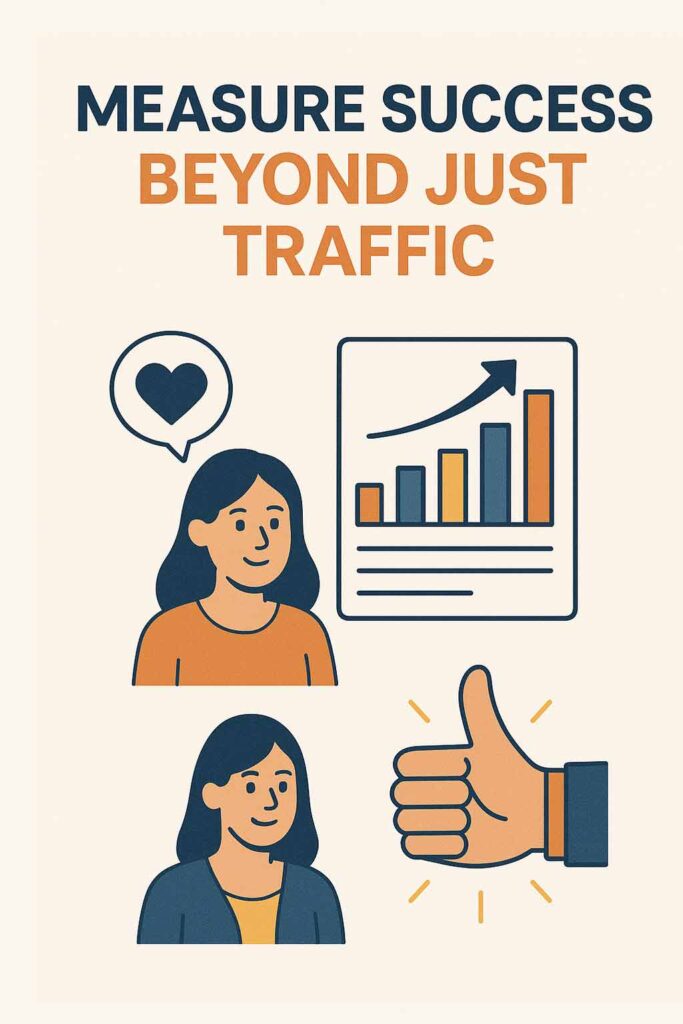
When creating human-first content, the goal isn’t just to create massive amounts of traffic—it’s to create actual connections with your audience. High traffic numbers might look good on paper, but they don’t always translate to how well your content is performing when it comes to engagement, trust, or influence. Human-first content is intended to serve, teach, and interact, not just pull clicks. Success, therefore, must be quantified beyond just how many people are coming to your site. You need to understand how your audience is interacting with your content once they arrive.
Does it mean reading your content from start to finish? Or perhaps leaving a comment, sharing it, or subscribing to your email list? Maybe it’s returning to your site again and again? All these behaviors are far greater than mere traffic statistics because they reflect that your content is well worth it. It’s bettering people’s lives, inspiring their interest, and building enduring connections. Eventually, content marketing success isn’t measuring how many folks visit once—it’s measuring how many folks keep coming back, and trust your voice enough to return to your brand over and over again.
Human-Centered Metrics to Track:
Time on Page
This metric reflects the duration of time visitors stay on your page. If they are staying longer periods, i.e., they are indeed reading and engaging with your material—without merely clicking off. More time on page reflects that your material is interesting, beneficial, and worthy of their time.
Scroll Depth
Scroll depth measures how deep users scroll down the page. If readers tend to scroll all the way to the end, then your content must be well-organized and interesting enough to engage them all the way through. It is a good indication that your message resonates with them from beginning to end.
Referrals and Shares
When people share your content with other people—be it on social media, messaging apps, or via email—it shows that they liked it and trusted it. Referrals widen your reach and build credibility by word of mouth.
Return Visitors
If people come back to your site or content repeatedly, it’s a strong sign that you’re delivering consistent value. Return visitors often turn into loyal followers, customers, or community members—showing a deeper connection than just one-time traffic.
Email Signups
Email subscriptions are indicators of trust and sustained interest. When someone forgoes their email, they’re basically declaring, “I want to learn more from you.” It’s one of the strongest signs of engagement and one of the key steps toward developing long-term relationships.
Building Relationships With Content
In today’s world of content, individuals are craving authenticity and connection. They don’t want to feel as if they’re being bombarded with a sales message—they want to feel heard, respected, and engaged. And that’s why great content isn’t just information; it builds relationships. So let’s disassemble how to do that:
Solves Real Problems
Your content should provide actual solutions to the issues your audience are facing. A how-to post, a tip, or an anecdote—useful content builds trust because it shows you understand what their pain points are—and that you care enough to help.
Asks Questions
Asking questions in your blog invites your readers to think, engage, and interact. It turns your blog into two-way communication. Questions like “What is your greatest challenge with time management?” or “How do you stay motivated?” open room for real discussion.
Includes Feedback Loops (Surveys, Polls, Comments)
When you use tools like surveys, polls, or comments, you’re showing that you value your audience’s voice. Feedback loops enable you to improve your content and involve your audience in the process. It’s a collaboration, not a broadcast.
Responds to Audience Needs
It’s not just asking for feedback that matters—you need to do something about it. By hearing what your audience is saying and then creating content that specifically addresses their needs, you’re showing you’re listening and that you care. That builds long-term loyalty.
Marketing Isn’t a Monologue—It’s a Conversation
At the heart of it all is one basic fact: good content marketing is not about talking at people, but talking with them. It is an evolving, dynamic conversation where your audience hears, respects, and is assisted.
Case Study: From Keyword-Centered to Human-Centered
Suppose you have a fitness blog. You want to assist individuals in losing weight, but the way you go about it can have a tremendous impact on how it’s received. Let’s contrast two methods:
Old Approach: Keyword-Stuffed Blog
You make a post titled:
“Best Exercises to Lose Belly Fat Fast”
This type of copy is created mainly to rank on popular Google searches. It’s often thin, repetitive, and written more for search engines than for real people. While it may get clicks, it rarely gets read or earns the reader’s trust. Readers are intelligent—They understand if something is just being done for the purposes of ranking or making a sale.
Human-First Approach with E-E-A-T
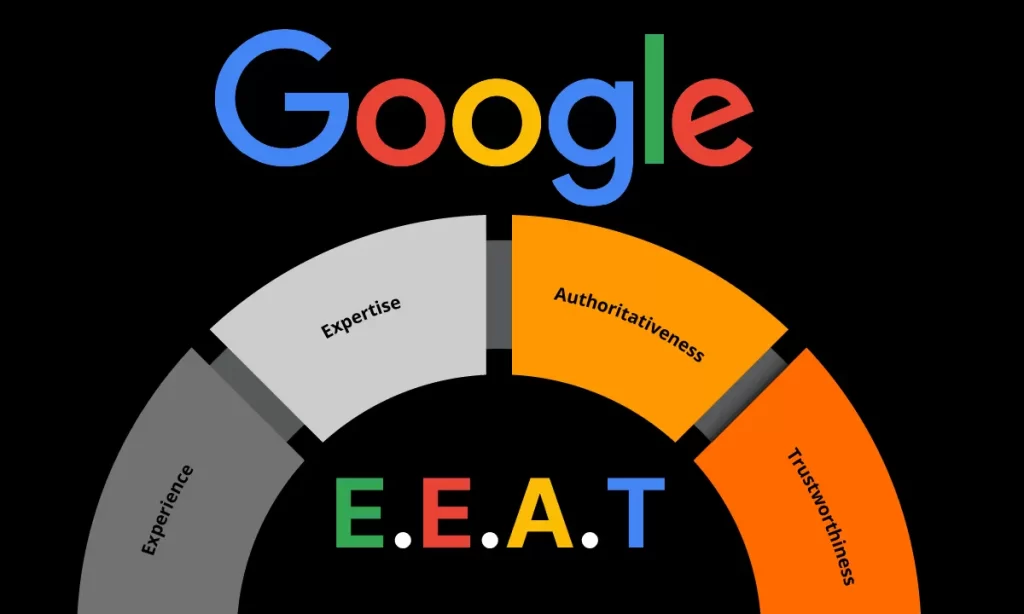
Now, aim for something bigger, personal, and credible:
Title: “How I Lost 15 Kilos at Home: A Beginner’s Real Workout Plan”
This already reads real, personal, and relatable. It invites people into a real story—something they can believe and learn from.
- Experience (E)
You begin by sharing your personal experience—how you struggled, what worked for you, where you went wrong, and how you kept yourself motivated. This first-hand knowledge makes your content authentic and trustworthy. People identify because they see themselves in your story.
- Expertise (E)
To add depth, you include tips or corrections from a professional fitness trainer. This gives your readers expert opinion alongside your personal experience. It shows that while you’re sharing your experience, you’re backing it up with real knowledge.
- Authoritativeness (A)
You include your bio, mentioning any relevant credentials—like if you’re a certified fitness coach, or have completed a nutrition course. This shows that you’re qualified and trustworthy, not just someone randomly writing about weight loss.
- Trustworthiness (T)
To create total trust, you cite your sources, use honest before-and-after photographs, and add a disclaimer (e.g., “This worked for me, but results may vary—consult a doctor or trainer before starting”). This honesty makes people feel safe in taking your advice.
The Result?
This is the kind of content that ranks, but it does more than that—it resonates. People will read it to the last word, share it, comment, and come back for more. You don’t just get traffic—you get loyalty, trust, and followers.
Surfer SEO – SEO Writing Without Losing Human Touch
Surfer SEO helps you optimize your content for search engines while not forgetting to write for people. It provides real-time SEO suggestions (keyword placement, structure, and readability) but encourages you not to sacrifice your tone and make it robotically unnatural. It’s ideal for reaching SEO goals without robotic writing.
Hemingway App / Grammarly – Write Clearly and Professionally
These writing software programs simplify, shorten, and rid your content of mistakes.
1. Hemingway App simplifies long sentences and improves readability so that your content is simple for anyone to read.
2. Grammarly identifies spelling and grammatical errors and also offers tone and clarity suggestions. They collectively refine your writing and cause it to sound more professional, which builds the readers’ trust.
Canva – Design Visually Stunning Content

Canva enables you to create beautiful infographics, social media, blog headings, and more without having to learn how to design. Visuals facilitate understanding and interaction, especially with complex topics. Your content is thus rendered more interactive and sharable, which improves the user experience as well as lends authority.
Notion / Trello – Plan with Purpose
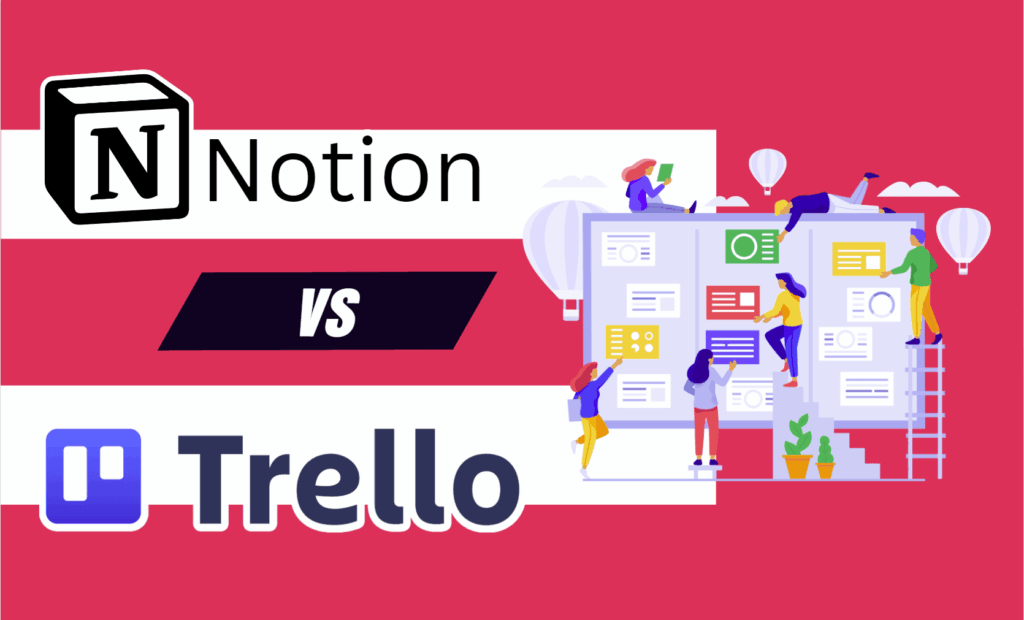
These planning and collaboration aspects keep you in check and in order. Using the to-do lists, content calendar, and team spaces, Notion and Trello help you create a clear content strategy. This conscious planning ensures that your content is well-researched, carefully planned, and aimed at your audience—not sloppily produced.
BuzzSumo – Find Trending Topics and Expert Insights

BuzzSumo helps you identify what is truly trending in your market. It shows trending content, top influencers, and competing content, so you know what people care about. You can then create relevant and authoritative content that speaks to real readers—not bots.
Google’s Search Quality Evaluator Guidelines – The Official Playbook for E-E-A-T
This is Google’s internal guide that is used by people who audit the quality of content. It explains what is used in daily life by Experience, Expertise, Authoritativeness, and Trustworthiness. Knowing it allows you to create content that meets Google standards and gains users’ trust, especially on serious topics like health, finance, or security (YMYL).
Final Thoughts: Be Human. Be Helpful. Be Honest.
As creators and marketers, we have a choice: build clickbait or build something that matters.
By combining a human-driven approach with Google’s E-E-A-T concepts, you not only rank higher in search but also are a brand that users trust, love, and come back to repeatedly.
For 2025 and beyond, success isn’t about outsmarting the algorithm; it’s about being the answer people seek.

